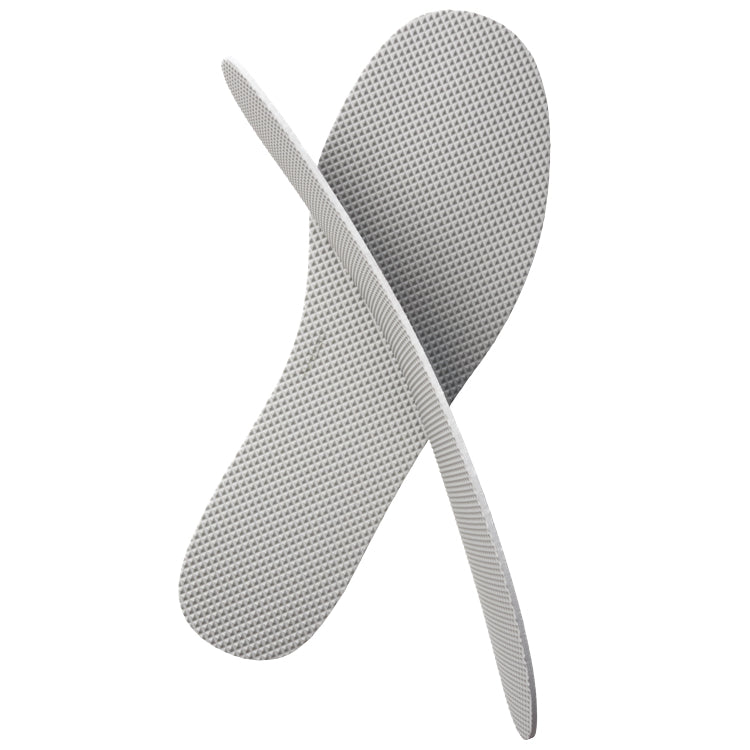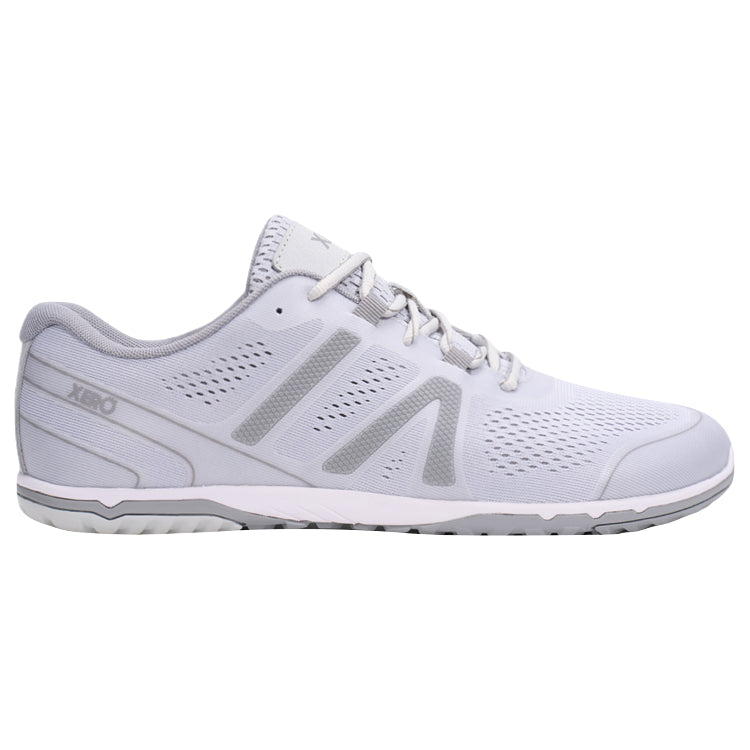
Most modern footwear comes with a removable liner or insole that sits in the bed of the shoe. Many people try on shoes and wear them for most of their lives without considering how the liner affects the overall fit and function of the shoe. It’s worth asking: If the liner was never meant to be removed, wouldn’t it be stitched into the shoe? Could it be that the shoe liner—which we’ve collectively come to regard as a helpful (or even mandatory) inclusion in most footwear—is not really necessary, or even desirable?
Despite what you may have previously thought, and what the footwear industry may lead you to believe, removing your shoe’s liner usually has no effect on the overall performance of the shoe. And shoe liners are not necessarily healthy for your feet (and, in most cases, do not help mitigate shoe odor, as is sometimes believed). Liners can cause foot slippage in athletic shoes that may lead to the development of blisters, and they can also easily become bunched or offset if you’re frequently taking your shoes on and off. There are several other main reasons, though, why you might consider removing the insoles from your shoes and letting your foot sit right at the bottom of your shoe. And here they are:
-
To Achieve the Best Possible Fit: If your shoe feels a little bit too tight, removing the liner can provide just enough space to make them fit better. In fact, removing the included (optional) liner can open up a surprising amount of space for the foot inside the shoe and can turn a slightly too-tight fit (especially across the foot, in the forefoot area) into a more optimal fit. Consider trying this simple technique of removing your shoe liner if you’re shopping for shoes or thinking about returning shoes you thought were too small. For individuals with wide feet, removing the liner can be particularly helpful in reducing or eliminating pinch forces on the toes and metatarsal heads, as doing so allows your foot to sit a bit lower in the shoe and take better advantage of the natural outward bowing of the toe box sidewalls. Removing the insole can also be helpful for individuals with hammertoes, which often rub against the roof of the toe box and cause blisters. With the liner removed, the foot sits lower in the shoe, which makes the toe box taller.
-
For Better Foot Function: Your feet are designed to feel the ground upon which you stand or traverse so that you can make the best possible footfalls when walking or running. Anything that blunts your experience of the ground makes it harder for your brain to process the important tactile feedback you get from your feet, which can lead to errant, sloppy footfalls and potential injury (e.g., sprains, strains, stress fractures, etc.). Removing your shoe’s liner brings your foot a bit closer to the ground, which has the dual benefit of providing you with greater ground feel (and therefore greater tactile feedback) and improving the stability of your foot and ankle. Most shoe liners are around 1-3 mm in thickness, though sometimes much thicker, and some may also incorporate unhelpful arch bumps or props, or other ridges. So, removing this material can have a big effect on how you experience the world through your feet.
-
To Make Room for Natural Footgear: Toe spacers and certain foot pads can help prevent or address a variety of foot problems, but extra space (both width and height) is often needed inside the footwear to accommodate these helpful items. Toe spacers such as Correct Toes assist in spreading the toes in an anatomically appropriate way, but trying to wear them inside footwear that’s not sufficiently wide or roomy in the toe box can be uncomfortable and counterproductive. Most conventional shoes have tapering toe boxes, but sometimes removing the liner can make a difference in terms of whether or not you can take advantage of products intended to naturally rehabilitate your feet and toes.
-
To Accommodate Low-Grade Foot Swelling: It's also worth noting that our feet tend to swell a bit over the course of the day or in warm weather conditions. Anything that opens up more space inside your footwear, then, can be helpful in accommodating this natural phenomenon and minimizing (or negating) any associated discomfort you might experience. Of course, more significant foot swelling, should you notice it (i.e., the kind of foot swelling in which you can leave an indentation if you press your finger into it), may be caused by an underlying health problem, and you should consider consulting your physician to better understand the root cause.
All of us at Natural Footgear wear our men’s and women’s foot-healthy shoes (which, by the way, already have more room in the toe box based on their design) without the optional liners—or in combination with thin and flexible Naboso proprioceptive insoles—and we find that this approach helps improve the functionality and tactile experience of the shoe without sacrificing foot comfort, the longevity of the shoe, or the shoe’s performance (regardless of the terrain). We recommend that you try on shoes with and without the liner to help determine what works best for you. You might also consider experimenting with shoes you already know and love. You might be surprised at how much more comfortable any shoe can feel with a little extra space.

WANT TO IMPROVE YOUR FOOT HEALTH?
Let the team at Natural Footgear help you! Subscribe to our newsletter for the latest offers and helpful info, and sign up for our FREE email courses on various topics and foot health conditions.
Sign Up →
Want to Improve Your Foot Health?
We are here to help you every step of the way. Get our newsletter for the latest offers and helpful info, and sign up for our FREE email courses on various topics and conditions, including bunions, hammertoes, neuromas, plantar fasciosis, shin splints, ingrown toenails, and more.
Sign Up →
 Most people never consider removing their shoe liner or insole, assuming that it’s a necessary inclusion in footwear, but we’ve found this to be an excellent way to enhance the fit and feel of almost any shoe. Removing the liner provides additional space to allow your toes to spread out naturally and—with the reduced stack height that comes with removing the liner—allows your foot to function more like a bare...
Read more
Most people never consider removing their shoe liner or insole, assuming that it’s a necessary inclusion in footwear, but we’ve found this to be an excellent way to enhance the fit and feel of almost any shoe. Removing the liner provides additional space to allow your toes to spread out naturally and—with the reduced stack height that comes with removing the liner—allows your foot to function more like a bare...
Read more













I was an early Naboso user. Now I am finally neuro-grounded.
We’re glad to hear it, David! We wish you continued success in your foot health journey.
All the best,
Robyn Hughes, ND